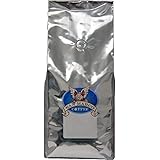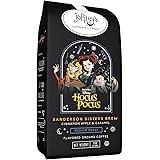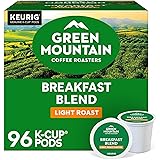Mastering Coffee Brewing Methods for the Perfect Cup at Home
Imagine starting your day with coffee that tastes just right, perfectly tailored to your preferences. Yet, walking into a coffee shop or browsing online, you face a dizzying array of coffee brewing methods and machines. “What’s the best way to brew coffee at home?” or “What coffee maker should I buy?” These are questions we all ask. The answer, as the video above shows, is wonderfully personal and depends on your taste and lifestyle.
This guide dives deeper into the most common coffee brewing methods. We will explore their unique qualities. You can discover the ideal coffee brewer for your home. We’ll cover everything from simple immersion techniques to complex pressure-based systems.
Exploring Diverse Coffee Brewing Methods
Coffee brewing methods vary widely. Each offers a different experience. They differ in body, clarity, and flavor. Let’s look at popular choices.
The Classic Choice: French Press
The French Press is incredibly popular. It is known for its ease of use. This coffee brewing method produces a full-bodied cup. Ground coffee steeps completely in hot water. This is called immersion brewing.
A metal mesh filter then pushes the grounds down. This leaves tiny particles in your cup. It creates a rich, cloudy beverage. Flavors are more integrated.
- Pros:
- It is very simple to use.
- No paper filters are needed.
- You can brew larger volumes.
- It is quite affordable.
- Cons:
- Cleaning can be tricky.
- Sediment often remains in the cup.
- Brewing takes a bit longer.
- Clarity of flavor is lower.
Imagine wanting a strong, robust coffee. The French Press delivers just that. It is perfect for darker roasts. It suits those who appreciate a bold taste. Cleaning involves rinsing grounds, which can be messy. Still, many find the rich reward worth it.
The Elegant Pour Over: Hario V60, Kalita Wave, Chemex
Pour over methods are a ritual for many. They offer a clean, bright cup. Hot water is poured over ground coffee. Gravity pulls water through the coffee bed. Paper filters capture fine particles. This creates exceptional clarity.
Brewing time typically ranges from two to four minutes. Control over the brewing process is key. You manage water temperature and pour speed. This technique highlights delicate flavors. It is ideal for light roasts.
- Pros:
- Produces a very clean cup.
- Flavors are transparent and bright.
- You have significant control over brewing.
- Brewers are often stylish design objects.
- Cons:
- Results can be inconsistent.
- A specific pouring technique is needed.
- Extra equipment like a gooseneck kettle is helpful.
- Paper filters are used and can add waste.
Imagine showcasing a coffee’s unique notes. A pour over allows this. Its elegance makes it a popular choice. Consistency improves with practice. The right grind size is also very important here.
The Best of Both Worlds: Clever Dripper
The Clever Dripper combines immersion and pour over brewing. It steeps coffee like a French Press. Then, a valve releases the brew. This allows water to filter through grounds. It uses a paper filter for clarity.
This hybrid method offers more forgiveness. You have freedom with grind size. It’s easier to replicate good results. You don’t need special pouring skills. It’s a pragmatic choice for many home brewers.
- Pros:
- Easier to replicate than pour over.
- More flexible with grind size.
- No special brewing kettle is needed.
- It provides a clean cup like pour over.
- Cons:
- Cleaning it properly can be difficult.
- Its design is not always considered beautiful.
Imagine wanting a clean cup without fuss. The Clever Dripper is a great option. It reduces variables for better consistency. It is a sturdy and practical coffee brewer.
The Versatile Traveler: AeroPress
The AeroPress is a pressure-based immersion brewer. Your hand provides the pressure. It brews coffee quickly. Often, it takes only one or two minutes. It creates a strong, concentrated brew.
Its portability is legendary. It is also nearly unbreakable. You can make various coffee styles. From “espresso-like” shots to full cups. The AeroPress Go, released in 2019, is even smaller. This makes it perfect for travel.
- Pros:
- It is very portable and durable.
- Brews coffee incredibly fast.
- It is easy to clean after use.
- Uses small, minimal paper filters.
- Offers a wide range of recipes.
- Cons:
- Limited to small brew volumes (200-250 ml).
- Brewing process can feel awkward at first.
- Many recipes can cause initial confusion.
- Coffee can still be slightly cloudy.
Imagine brewing excellent coffee anywhere. The AeroPress excels at this. Its quick process is great for busy mornings. Experimenting with recipes is part of the fun. This coffee brewer is a favorite among adventurers.
The Italian Icon: Moka Pot
The Moka Pot is a classic stovetop brewer. Alfonso Bialetti invented it in 1933. It is very popular, especially in Europe. Water boils in the lower chamber. Steam pressure forces it through coffee grounds. This creates a strong brew.
The resulting coffee is strong. It sits between espresso and filter coffee. Many use it with milk. Its iconic design makes it a beautiful object. It is a robust option for camping too.
- Pros:
- No separate brewing kettle is needed.
- It is highly durable, great for travel.
- Features an iconic, timeless design.
- Produces a strong, rich coffee.
- Cons:
- Brewing control is quite difficult.
- It can be challenging to clean thoroughly.
- Working with pressurized boiling water requires care.
- Over-extraction is a common issue.
Imagine a rich, intense coffee. The Moka Pot delivers this experience. It requires careful heat management. This prevents bitterness. This coffee brewer offers a deep, satisfying flavor.
The Ancient Brew: Cezve or Ibrik
Cezve, also known as Ibrik, is an ancient method. It is still popular in many regions. Think Turkey, Greece, and the Balkans. This method brews a small, very strong cup. Coffee grounds are extremely fine. They are finer than espresso grounds.
Coffee and water are heated together. Traditionally, it comes to a boil. Modern methods stop just before boiling. The grounds remain in the cup. They sink to the bottom. Waiting for it to cool is essential before drinking.
- Pros:
- It is a simple, direct brewing method.
- Offers a beautiful, traditional ritual.
- No filters are required whatsoever.
- Produces a uniquely strong, small cup.
- Cons:
- Easy to over-extract the coffee.
- Requires an exceptionally fine grind.
- Only small amounts of coffee are brewed.
- You must wait for the coffee to cool.
Imagine connecting with coffee history. The Cezve offers this. Its copper vessels are often works of art. The intense flavor is a unique experience. This coffee brewing method is a cultural cornerstone.
Convenience and Consistency: Drip Coffee Machine
Drip coffee machines are automatic brewers. They simplify the pour over process. Just add grounds and water. Then, press a button. Machines like the Technivorm Moccamaster are known for quality. They offer stable water temperature. Their longevity is also a major plus.
These machines brew large batches. Up to one and a half liters are possible. They provide consistent results. This makes them ideal for households. They are perfect for serving multiple people. This coffee brewing method offers great convenience.
- Pros:
- It is extremely simple to operate.
- No electric kettle is required.
- Brews more consistently than manual pour over.
- Excellent for brewing large volumes.
- Cons:
- Cleaning can be quite difficult.
- You have less control over brewing parameters.
- Machines are generally more expensive.
- They take up more counter space.
Imagine brewing coffee for a group. A drip machine makes it easy. Its consistent results are reliable. It is a fantastic option for daily brewing. This automatic coffee brewer takes the guesswork out.
The Art of Pressure: Espresso
Espresso is a strong, concentrated coffee. It features a rich crema layer. It is brewed under high pressure. This process is complex at home. You have manual, automatic, or super-automatic options. Manual machines require your physical force. Automatic ones use a pump. Super-automatics grind beans too.
Espresso machines are generally expensive. Cheap options often fail quickly. They might not extract coffee properly. A well-extracted espresso is amazing. It is also the base for many milk drinks.
- Pros:
- Brewed very quickly once set up.
- Produces an incredibly rich taste.
- Forms the perfect base for lattes and cappuccinos.
- The process can be a rewarding skill.
- Cons:
- Machines are typically very expensive.
- Requires learning to “dial in” the espresso.
- A dedicated, expensive espresso grinder is needed.
- Cleaning and maintenance are intensive.
Imagine a tiny cup bursting with flavor. Espresso delivers this. It is a challenging but rewarding method. Many enjoy mastering this brewing technique. It truly elevates your home coffee experience.
Ultimate Convenience: Coffee Capsules
Coffee capsules are pre-dosed, single-use pods. They contain ground coffee. Typically, they hold about 5.5 grams for espresso. This method is incredibly simple. You add cold water to the tank. Insert the capsule. Push a button. Heated water then extracts the coffee.
The resulting brew is like a diluted espresso. It often has a thin crema. Specialty coffee capsules can be aromatic and fruity. They offer convenience unmatched by other methods. This is an easy way to enjoy various coffees.
- Pros:
- Extremely easy and user-friendly.
- No other equipment besides the machine is needed.
- Brews very fast, in seconds.
- Relatively easy to keep clean.
- Cons:
- The coffee is not truly fresh; it’s pre-ground.
- Produces significant waste due to individual packaging.
- It is the most expensive option per gram of coffee.
- The resulting brew is not true espresso.
Imagine coffee in under a minute. Capsules deliver unmatched speed. They are perfect for busy lifestyles. While not fresh, quality is improving. This coffee brewing method prioritizes speed.
Choosing Your Ideal Coffee Brewer: The Golden Rules
After comparing all these coffee brewing methods, a secret truth emerges. No matter the brewer, the coffee itself is most important. A fancy machine will not improve bad beans. Focus on quality, freshness, and roast level. This is key to delicious coffee.
1. Quality: Seek out specialty coffee grade beans. These coffees are grown and processed with care. They offer superior flavor profiles. Find a local specialty coffee roaster. They can guide your choices. This elevates any home brewing method.
2. Freshness: Coffee ages quickly. Look for a roast date on the bag. Brew your coffee soon after roasting. Aim to consume it within a few weeks. Stale coffee loses its best characteristics. Freshness is vital for taste.
3. Roast Level: Different roasts suit different methods. Light roasts shine in pour overs. Darker roasts work well in French Presses. Understand how your chosen method extracts coffee. Match your roast to your brewer. This optimizes flavor.
4. Grinding Fresh: This is a game-changer. Grinding coffee just before brewing is crucial. Pre-ground coffee loses flavor fast. Invest in a good grinder, manual or electric. It’s perhaps the best upgrade you can make. You will taste the difference immediately. This step truly unlocks your coffee’s potential.







